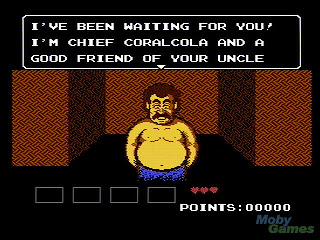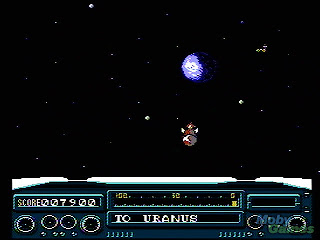- Publisher: Nintendo
- Developer: Nintendo
- Platform/Release: NES, December 1988
- Genre: 2D Action-adventure
- Rarity/Cost: Moderate (US$5-20)
The apparent trend in NES games in 1988 was sequels that differed radically from their predecessors. I am of course thinking about the American Super Mario Bros. 2, Zelda II: The Adventure of Link, and Castlevania II: Simon's Quest. These games have split the fanbase due to how radical of departures they were, and series fans either have to love them or hate them. (Less so for Mario 2; that one seems to have gone over pretty well.) The main, if not only, reason for all this decisiveness is because the original games were such masterpieces, even to this very day. True, I never played anything in the Legend of Zelda franchise until Ocarina of Time, but I got to the first game eventually, and I still love it despite its quirks. I don't care that it doesn't follow all the rules set by the original and by everything that came after it; I love it for what it is.
This is one of the few direct sequels in the Zelda franchise. After the events of the first game (I think it's safe to go without spoilers), Ganon is dead and Princess Zelda is safe and ruling Hyrule again. ...Until she is stricken with a sleeping spell. The only way to wake her up involves traveling to six temples to place a gemstone in each, then going to one final temple to find the wizard who can reverse the curse. All the while, the enemy forces are trying to revive Ganon by using the blood of Link. Obviously, Ganon's not the villain of this game, but he does show up on the Game Over screen, something you'll be very familiar with by the time you're done.
 |
| Not everything from the first game is gone. [1] |
As in the first Zelda, there is a battery-backed save function, and it's a good thing; this game is massive, whether for its time or otherwise. There are a total of seven dungeon levels you'll have to explore, and each one is bigger even than any given dungeon from the first Zelda. In order to get through one of them, you'll have to do plenty of level grinding on your own time. Given the low experience returns from random battles, it's easier to do so in caves or temples instead. Wherever you choose to spend your time leveling up, you'll need it; this game is not only big in length, but in challenge. Your sword has a short range, even though you can, once again, fire sword beams only when your health is full. You get three lives, but when they're gone, you have to continue from the starting point, Zelda's palace, even if you were in a dungeon. There are 1-ups to be found here and there, but in one more classic screw-you, they never reappear if you save your game after picking up one of them. Save them for the final level, or just buy one for 9,000 experience points once you've upgraded one of your stats fully. Plus, there are some enemies whose attacks can't be blocked by your shield, and don't get me started with the Darknut knights you'll have to duel with. Spare yourself the trouble of trying to get past their defenses, and jump and attack to hit their heads above their shields.
 |
| Sparring with armoured enemies can be frustrating... or trivially easy. [1] |
Control: 4 Triforce pieces out of 5
Design: 4 Triforce pieces out of 5
Graphics: 4 Triforce pieces out of 5
Audio: 5 Triforce pieces out of 5
Value: 5 Triforce pieces out of 5
The Call: 90% (A-)
Thank you all for joining me in this month-long journey through some of the best and worst the NES has to offer. This is by no means the last time I'll cover games for this great system, since given its library of almost 800 titles (for North America and the PAL region), there's so, so much I haven't played. All the same, since I've done only NES games this whole month, it would be nice to stretch my non-literal legs. I thought I'd be a little daring, and go from Nintendo to... Sega? Look forward to that, vague as it may be, and happy Halloween!
[1] "Zelda II: The Adventure of Link NES Screenshots". MobyGames. http://www.mobygames.com/game/nes/zelda-ii-the-adventure-of-link/screenshots.




































